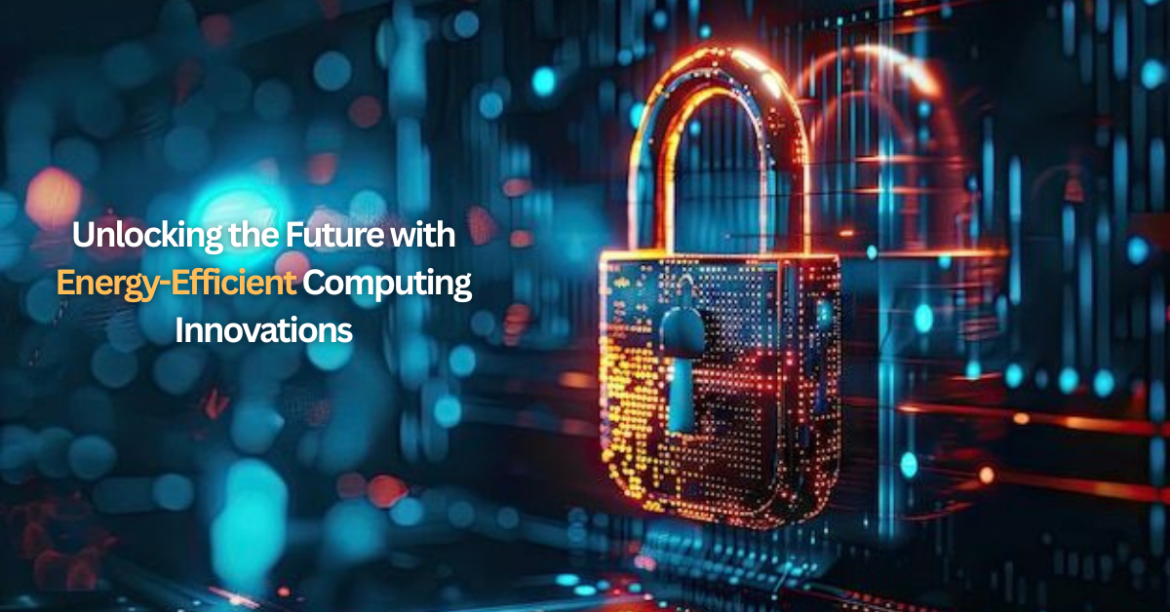In today’s fast-paced digital age, the demand for powerful computing continues to grow, but so does the need to minimize energy consumption. As businesses, researchers, and individuals increasingly rely on technology, energy-efficient computing has become a cornerstone of sustainability and progress. At Cyprus Magazine, we explore how this shift is shaping the world of technology while also highlighting the opportunities it offers for a greener and smarter future.
Energy-efficient computing is no longer a niche concept. It is an essential element of the global transition towards sustainable digital infrastructures. This movement is redefining how data centers operate, how devices are designed, and how societies envision the role of technology in everyday life. By adopting energy-efficient practices, we can reduce carbon footprints while still enjoying the innovations that drive productivity, entertainment, and connectivity.
Understanding the Essence of Energy-Efficient Computing
Energy-efficient computing revolves around maximizing performance while minimizing energy usage. It focuses on creating hardware and software solutions that work harmoniously to deliver more with less. The foundation lies in optimizing processors, memory systems, and algorithms to ensure that every task consumes as little power as possible. This approach not only saves costs but also reduces the environmental impact of digital technologies.
Why Energy Efficiency Matters in the Digital Age
As the digital world expands, so does its hunger for power. Massive data centers, countless smart devices, and connected systems place immense pressure on the global energy grid. Energy efficiency is crucial to ensure sustainable growth. Beyond environmental concerns, energy-efficient computing also improves system performance, extends device lifespans, and provides economic advantages by cutting down utility bills. This blend of ecological and financial benefits makes it indispensable in the modern world.
Innovations Driving Energy-Efficient Computing
Processor Design and Optimization
Modern processors are built with advanced architectures that balance performance with power conservation. Multi-core systems, dynamic voltage adjustments, and sleep states allow devices to deliver high output without unnecessary energy waste.
Smart Algorithms and Machine Learning
Software optimization plays a vital role. Algorithms designed to streamline operations ensure fewer cycles are wasted. In machine learning, lightweight models and pruning techniques reduce computational load while maintaining accuracy.
Cloud and Virtualization Technologies
Cloud computing has redefined how resources are managed. By virtualizing resources, data centers can dynamically allocate computing power based on demand, ensuring that energy is not wasted on idle machines.
Advanced Cooling Solutions
Cooling remains one of the most energy-intensive aspects of computing. Innovative cooling systems, such as liquid cooling and immersion techniques, are transforming energy management by reducing dependency on traditional air conditioning.
Energy-Efficient Computing in Data Centers
Data centers are at the heart of the digital universe. They process vast amounts of information daily, but they also consume enormous amounts of energy. By adopting energy-efficient hardware, optimized layouts, and renewable energy sources, data centers can drastically cut their energy consumption. Green data centers are leading the way in reshaping digital infrastructure by integrating efficiency into every design aspect.
Everyday Devices Embracing Efficiency
From laptops to smartphones, energy-efficient computing is becoming part of daily life. Devices are designed to run longer on smaller batteries, reducing charging frequency and overall energy demand. Energy star certifications and eco-friendly manufacturing processes demonstrate a shift toward devices that prioritize sustainability without compromising functionality.
Steps to Implement Energy-Efficient Computing Practices
Optimize Hardware Usage
Choose energy-rated devices and regularly maintain systems to avoid unnecessary energy drains.
Embrace Virtual Workspaces
Encourage cloud adoption and remote collaboration tools to minimize physical infrastructure requirements.
Update Software Regularly
Newer software versions are often optimized for better efficiency, reducing computational load.
Educate and Promote Awareness
Training individuals and organizations to prioritize energy efficiency ensures long-term positive impacts.
Challenges Facing Energy-Efficient Computing
Despite its promise, energy-efficient computing faces challenges such as high initial costs, compatibility issues, and the rapid pace of technological change. Overcoming these barriers requires collaboration between governments, private sectors, and educational institutions to create supportive policies and foster innovation.
The Future Landscape of Energy-Efficient Computing
Energy-efficient computing is paving the way for breakthroughs in artificial intelligence, the Internet of Things, and advanced scientific research. Future trends point toward quantum computing, neuromorphic architectures, and entirely renewable-powered systems. These innovations will ensure that the digital world grows without exhausting natural resources.
Comparative Table of Energy-Efficient Strategies
| Strategy | Key Benefit | Practical Application |
| Processor Optimization | Reduced power drain | Mobile devices |
| Cloud Resource Allocation | Dynamic energy management | Data centers |
| Lightweight Algorithms | Faster processing with less energy | Machine learning |
| Advanced Cooling Systems | Lower energy required for temperature control | High-performance systems |
| Renewable Energy Integration | Sustainable and eco-friendly power supply | Green data centers |
Frequently Asked Questions
What is energy-efficient computing?
It refers to designing and using computing systems that maximize performance while consuming minimal energy, reducing environmental and financial costs.
Why is energy-efficient computing important?
It ensures sustainable digital growth, lowers carbon emissions, reduces costs, and extends device lifespans, benefiting both users and the environment.
How can businesses adopt energy-efficient practices?
Businesses can use green data centers, embrace virtualization, upgrade hardware, and train employees to optimize energy use.
Are energy-efficient devices more expensive?
While the initial investment may be higher, the long-term savings on energy bills and maintenance make them cost-effective.
What role does software play in energy efficiency?
Optimized software reduces unnecessary computations, improves system performance, and ensures that hardware consumes less energy.
Conclusion
Energy-efficient computing is not just a trend—it is a necessity for a sustainable future. By adopting innovations across hardware, software, and infrastructure, individuals and organizations can embrace technology that works smarter while caring for the planet. At Cyprus Magazine, we believe that energy efficiency in computing will lead the way toward a digital landscape that balances innovation with responsibility.



